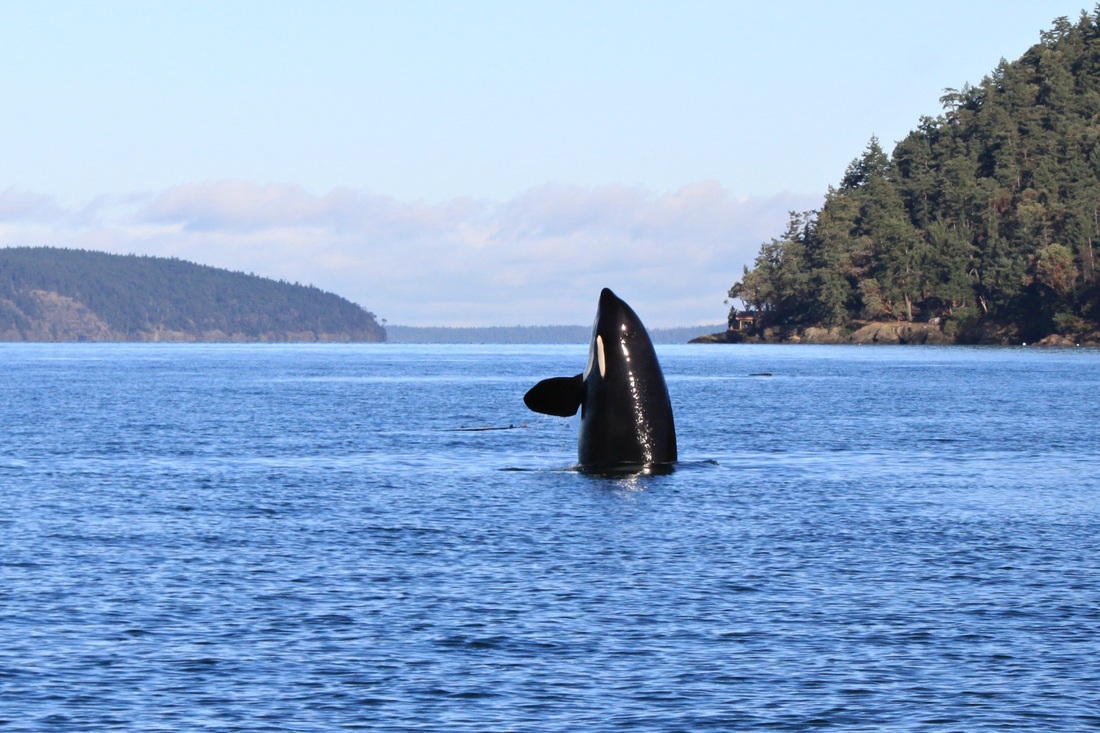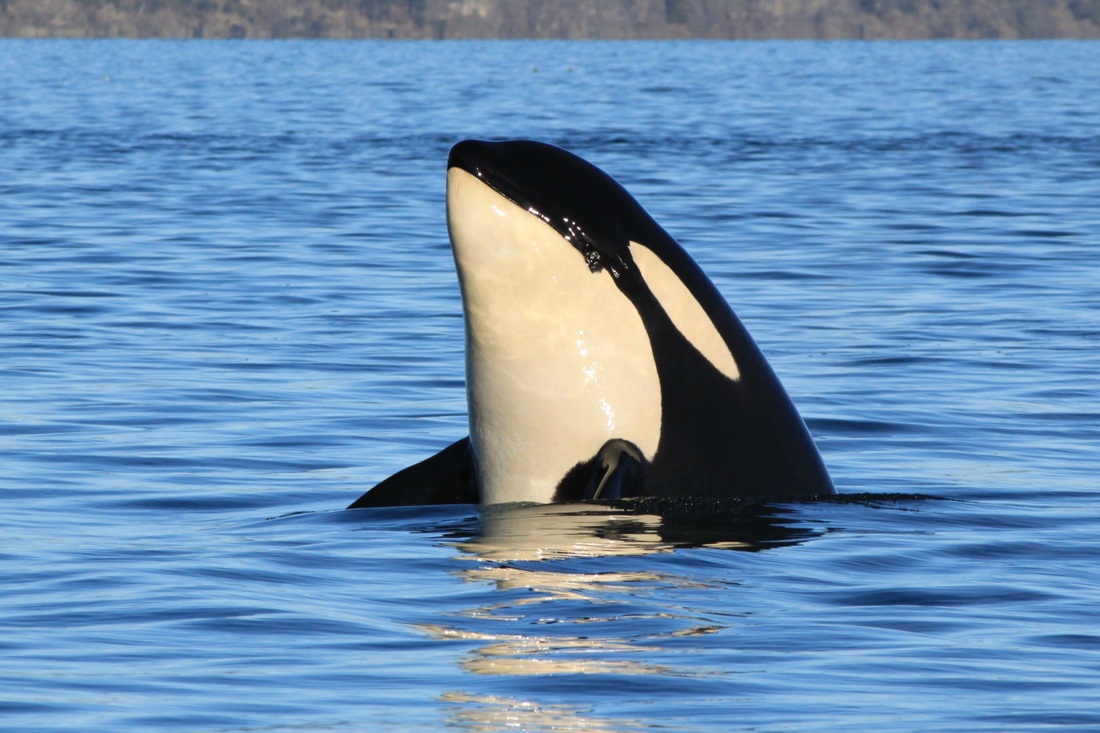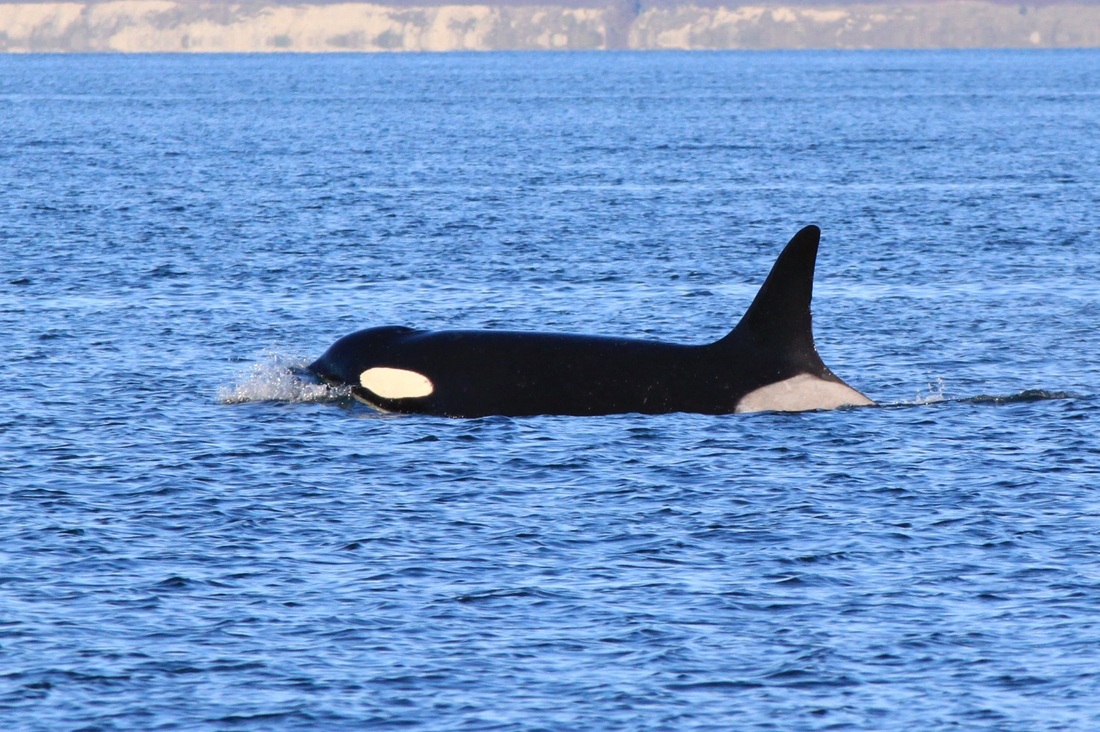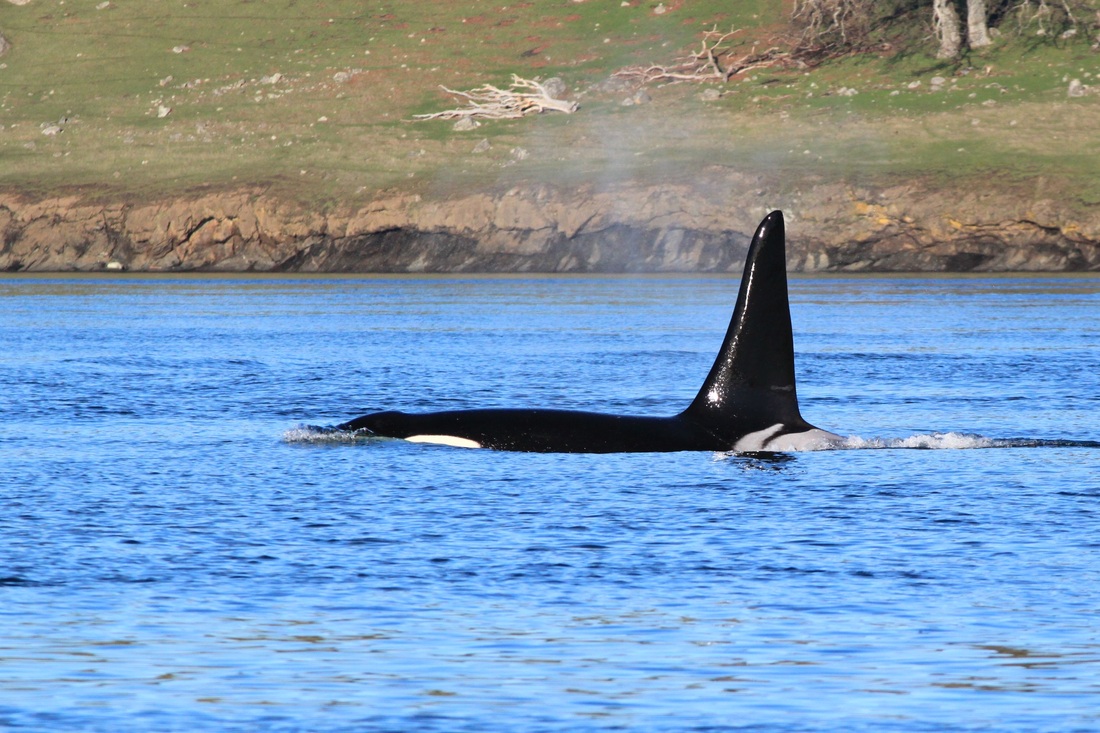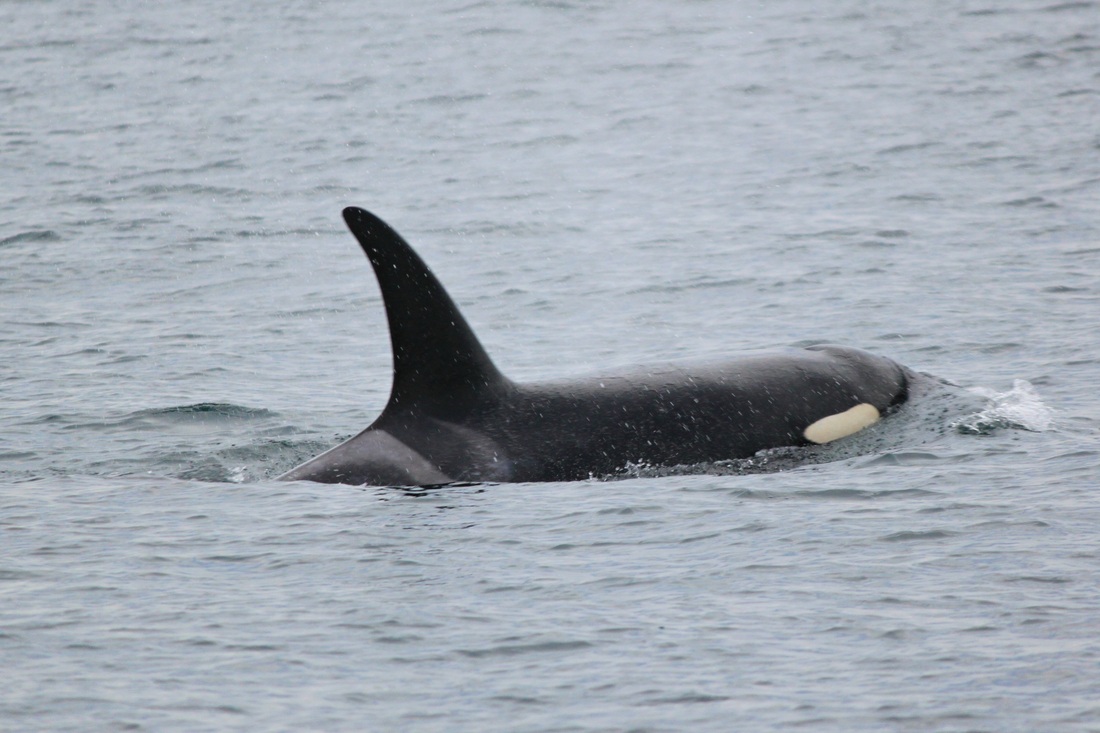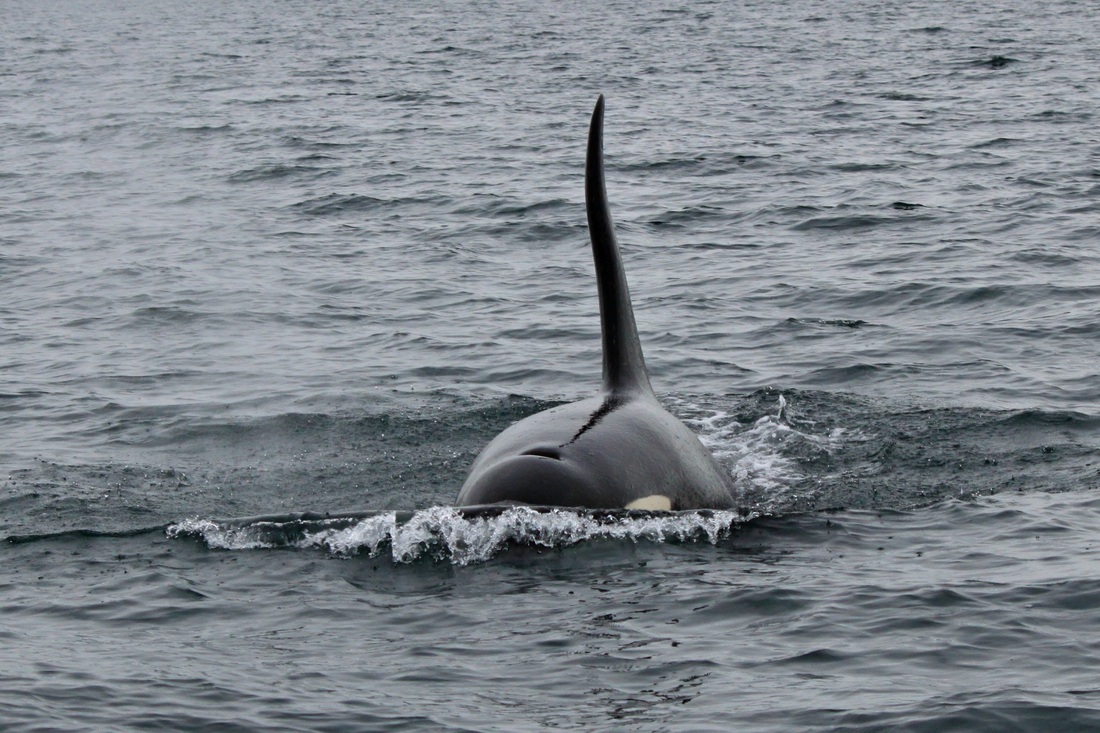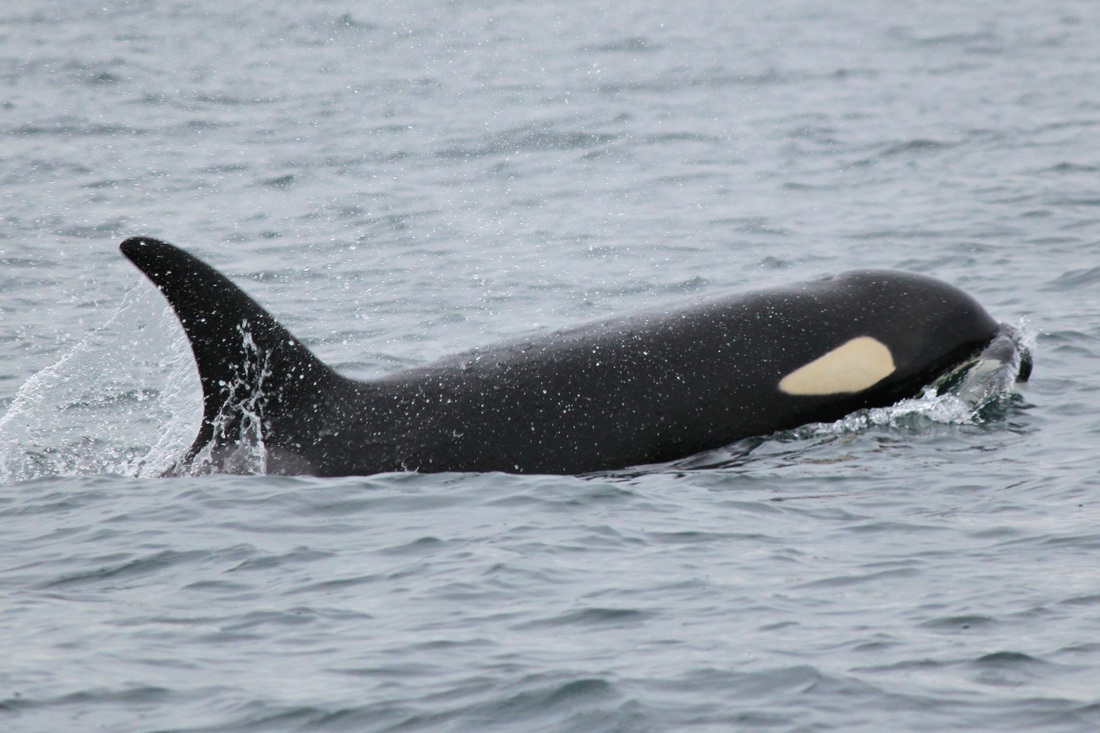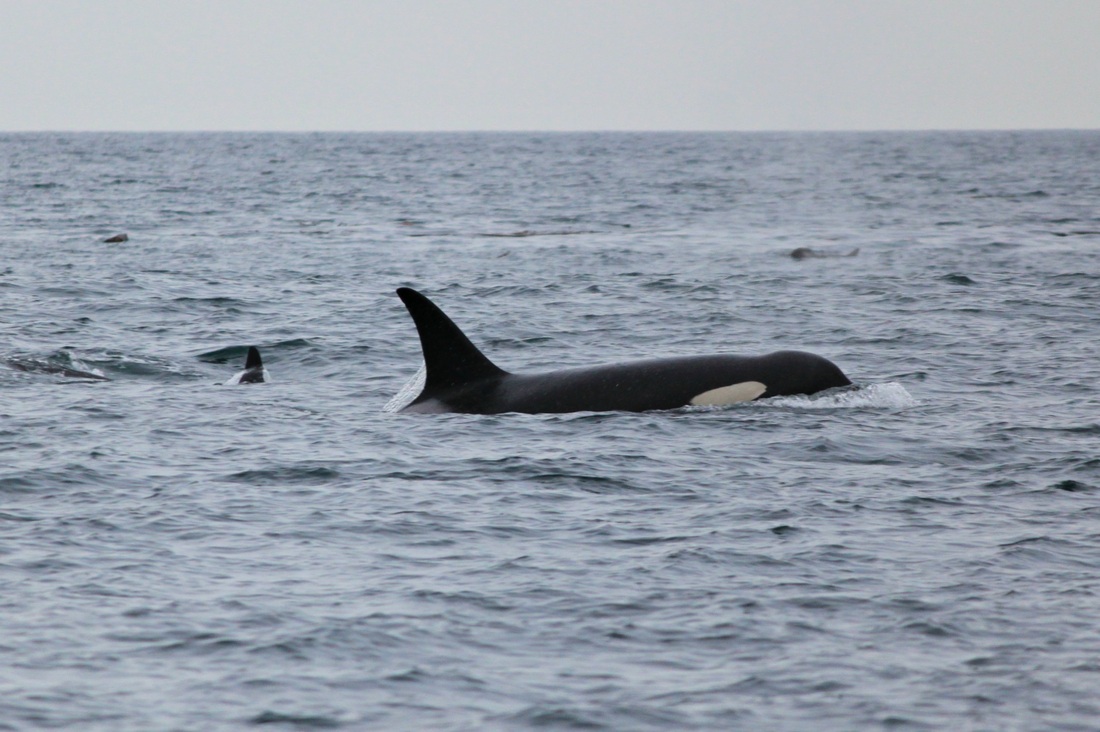We motored down San Juan Channel, then through Wasp Pass. As we passed Bell Island, I gazed over towards Pole Pass and noticed a group of orcas surfacing, one of them being a male who was tail slapping. As we turned the boat and made our way over to them, we quickly realized that we were looking at J pod! Closest to us was a tightly packed all male group made up of Cookie J38 (born in 2003), Mako J39 (2003), Moby J44 (2009), Se-Yi'-Chn J45 (2009), and Onyx L87 (1992). Doublestuf J34 (1998) was also part of the group for a bit. The males were being quite tactile and playful, and even showed their sea snakes off a few times! The rest of J pod (minus the J16's) was traveling a little further ahead of the males and was also in an active/playful mood. I don't think I have ever seen so many spy hops during one encounter! Princess Angeline J17 spy hopped at least five times, but Granny J2, Samish J14, Shachi J19, Oreo J22, Polaris J28, Doublestuf J34, Hy'shqa J37, Se-Yi'-Chn J45, and Ti'lem I'nges J49 also spy hopped at different points. There were also tail slaps and cartwheels. Granny J2 even did one of her back flip type cartwheels!
At this point, I transferred to a friend's boat that was also on scene while Ken and Dave headed back to the dock on San Juan Island. My friends and I then headed motored over to identify orcas that were far away on the opposite side of San Juan Channel to see if it was the independent J16 matriline (the only orcas/matriline unaccounted for). The orcas turned out to be Granny J2 and sprouter male Cookie J38 traveling side by side. The two soon entered Spieden Channel and headed toward Battleship Island. They were followed by males Onyx L87 and Mako J39. Bringing up the rear was the rest of J pod traveling in two separate groups. One group traveled very close to the Spieden Island shoreline, while the other was further offshore. As they neared Sentinel Island, Blackberry J27 split off from the offshore group and headed towards Battleship Island.
What an amazing encounter with J pod! The water condition, sunny weather, and company (on both boats) couldn't have been better too! You can become a Center for Whale Research member here.
Please do not use these photos without permission. Just ask.
